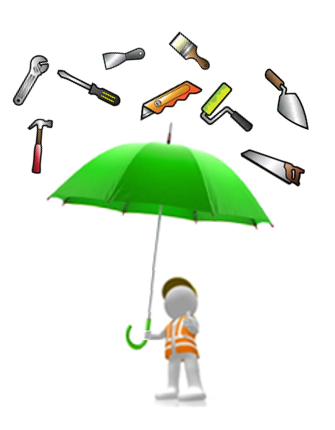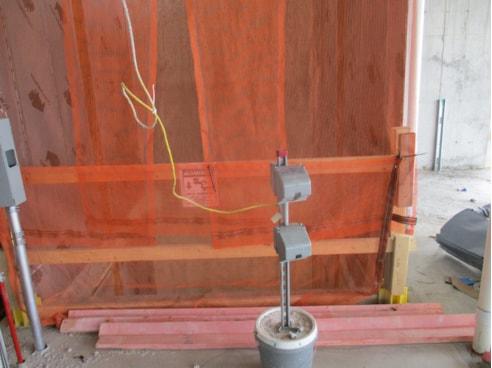
According to an article from EHS today, dated March 1, 2016, fall protection violations once again topped OSHA's list of violations for 2015 with 7,402. This includes tools and people, because fall protection refers to anything that can fall, whether it's a worker, tools or equipment.
For all objects at height – including humans – the focus always should be on preventing things from falling rather than on catching objects, or on limiting the damage after they fall.
Dropped objects have been a problem for as long as the force of gravity has existed, and have been written about for at least a century. In fact, the New York Times published an article in 1903 about dropped objects in which it said: "Dozens of placards posted at various places on the bridge caution the iron workers to use great care in the handling of tools, to avoid dropping them into the river."

Falling object protection set for future work within an elevator shaft (Photo Courtesy of Mark McCreery)
Despite OSHA statistics – and the fact that many of these violations could have been prevented with the proper safety equipment – many contractors do not take the necessary precautions to prevent fall-related injuries by providing workers with personal fall protection systems for both the workers and their tools.
HOW TO USE FALL PROTECTION GEAR FOR TOOLS
When using fall protection equipment for tools, there are five simple rules to follow:
- Make sure the lanyards, attachment points and wristbands allow you to use the tool with little to no interference.
- To help maintain your tool's functionality, you should not need to modify the tool to effectively attach them. Products like D-rings, self-vulcanizing tape, tool cinch attachments and quick spins and rings can complement the design and functionality of the tool without altering them.
- Tools over five pounds should be secured to a fixed structure or anchor point approved by the site and that are safe to use as a tether.
- Pay attention to the load rating. For example, if a tether that is load rated for five pounds is connected to an attachment point rated for two pounds, the load rating or the lesser of the two components should be followed.
- Be brand loyal because systems often are built and designed to work together for maximum effectiveness
The third largest cause of death in the workplace, behind transportation incidents and workplace violence, is contact with objects and equipment, the majority of which are being struck by a falling object.
The fourth leading cause of death in the workplace is falls. Falls were the third largest cause of death, but the increased use of fall protection equipment by workers has lowered the death rate from falls.
OSHA requires that if you work in an environment in which you're at risk of being hit by something that falls, you must:
- Secure tools and materials to prevent them from falling on people below.
- Barricade hazard areas and post warning signs.
- Use toe boards, screens on guardrails or scaffolds to prevent falling objects.
- Use debris nets, catch platforms or canopies to catch or deflect falling objects.
Too often, companies only invest in safety after a tragic event occurs. Although most companies now recognize the hazards of working at height, the next step is for them to realize that fall protection – for people and tools and equipment – must be addressed before an incident, not after, to help improve the personal safety of workers while working at height.
To read more on this article, please visit EHS TODAY: THE SKY ISNT FALLING AND YOUR TOOLS SHOULDNT EITHER
For more information on Workplace Safety and Training Solutions, check out our
Safety and Osha Training section!
Related Topics: Accident Prevention, American Society of Safety Engineers, American Society of Safety Professionals (ASSP), Behavior Based Safety, Coalition for Construction Safety, Construction Safety, Fall Protection, Hoist Safety, IIPP, Injury & Illness Prevention Plans, Jobsite Safety, OSHA, OSHA 30 Hour Construction, OSHA Citations, OSHA Compliance, OSHA Enforcement, OSHA Inspection, OSHA Inspection Procedures, OSHA Reporting, OSHA Safety Violations, OSHA Training, Risk Assessment, Safety Articles, Safety Awards, Safety Compliance, Safety Consulting, Safety Culture, Safety Hazards, Safety Programs, Safety Reporting, Safety Statistics, Safety Tips, Safety Tools, Safety Training, Safety Training Programs, Scaffolding Safety, Training, Work Zone Safety, Workplace Safety